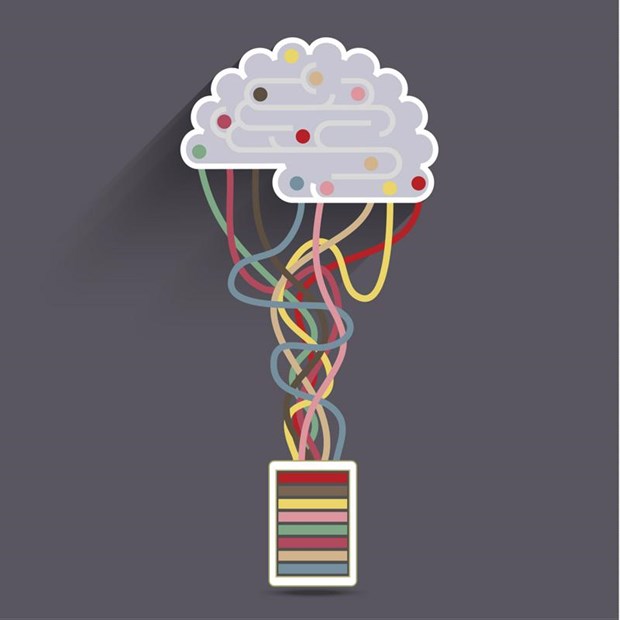Interacting with a computer as if it were a person has a long history. Decades before Siri and Alexa hit the scene, this concept took center stage in films such as the 1968 classic "2001: A Space Odyssey," which featured an advanced artificial intelligence (AI) entity named HAL that could control the main characters' spaceship and even play chess. In the real world, progress toward fully conversant AI began around the same time with ELIZA, a virtual assistant at MIT designed in part for health-related activities, including basic psychotherapy.
Both HAL and ELIZA were examples of chatbots, i.e. programs capable of simulating conversations for practical purposes. Text-based chatbots are now built into popular messaging platforms like Slack and Facebook Messenger, while voice-capable ones are integral to both the Apple HomePod and Amazon Echo. In healthcare, these AI programs have also gained prominence.
One company specializing in natural language processing has gone so far as to call them "health plans' new best friend." Meanwhile, they have also become useful tools for providers seeking to improve patient relations and experiences. With carefully planned application, they could eventually support better outcomes for the entire health system.
AI in Action: How Chatbots and Virtual Assistants can Transform Healthcare
Global Market Insights estimated the market for health-specific virtual assistants could reach 1.5 billion by 2024. That total includes services for speech recognition, voice recognition and text-to-speech, which enable many uses such as:
Provider Outreach, Confirmations and Reminders
According to the Centers for Disease Control and Prevention (CDC), less than half of Americans were vaccinated against influenza during the 2016-2017 flu season, resulting in many preventable deaths and visits to the ER. The 2017-2018 season saw more than 23,000 hospitalizations for flu-related ailments through February, as per CDC numbers. One obstacle to encouraging people to get vaccinated is outdated marketing, with oftentimes a heavy reliance on flyers and emails that easily get lost in the shuffle.
An Arizona physician's solution was to leverage an SMS text chatbot to improve local vaccination outreach. Response rate climbed from 1 percent under previous channels to 30 percent with the chatbot campaign. AI can automate the process of sending, responding and following up to thousands of SMS messages that have an almost 100 percent open rate. This approach can be incorporated into appointment confirmations and reminders.
Higher-quality Interactions With Health Plans
Pivoting from providers to payers, there is considerable potential for chatbots within health plans. Today's patients have high expectations of their insurers, yet the healthcare sector as a whole has faced difficulties in matching the streamlined experiences now available from everyone from banks to e-commerce sites. Part of the challenge stems from the unique stakes and regulations of healthcare, but it could also benefit from improved customer service technologies.

Enter virtual assistants. A subscriber visiting a payer's website/mobile app could ask specific questions (e.g., "What's this plan's pregnancy coverage provisions?") and receive rapid responses. Similarly, voice AI might assist in first-call resolution rates by providing clear menu options and call routing. Chatbots overall could help in the drive to improve subscriber retention rates, which vary widely from 67 to 90 percent on the state-based exchanges, according to Nuance Communications.
Telemedicine
AIs are ideal fits for telemedicine, since they can be accessed from nearly any location with a network connection. Telemedicine could become a $113 billion market by 2025, according to Grand View Research, with its key applications including video conferencing and virtual medical assistants who can support remote patients with symptom assessments and appointment scheduling, if necessary.
Many healthcare chatbots optimized for these uses are already available through free and easy-to-use mobile applications. For example, HealthTap can connect you with a doctor via virtual assistant and send pictures and lab results for evaluation. The AI-driven Ada empowers patients to describe how they're feeling and receive guidance on next steps if they seem unwell.
Chatbots as one Piece of the Healthcare Modernization Puzzle
It's still relatively early in the evolution of chatbots and virtual assistants, especially when compared to the healthcare system itself. In the short term, their adoption will supplement other tools and methodologies to enable operational efficiencies and better patient experiences.
At Advanced Medical Reviews (AMR), an IRO URAC-accredited for Comprehensive Internal and External Reviews, the implementation of a chat feature to improve client service and satisfaction has been an innovation that was immediately utilized by many clients. As Emir Rubi, Operations Manager, notes, "For many healthcare professionals, a large portion of the day is spent on a computer inputting updates to patient's records, so an immediate interface to have questions answered throughout the case review process is an extremely efficient tool. We are always looking for ways to streamline our process so both payers and our physician reviewers have as many resources at their disposal to do their job efficiently. I am excited to see how this technology evolves and enhances what we do."
A fundamental value proposition of chatbots is their ability to scale to numerous patients who might be more difficult to reach through communications channels requiring significant manpower. Likewise, IROs can help plans who need additional personnel and professional assistance during review, leading to a superior overall experience for payers, patients and providers.
Sign up for Updates:
Privacy Details
By submitting this form, you are consenting to receive marketing emails from: Advanced Medical Reviews, LLC. You can revoke your consent to receive emails at any time by using the Unsubscribe link, found at the bottom of every email.
